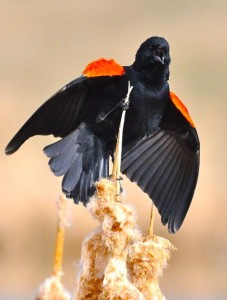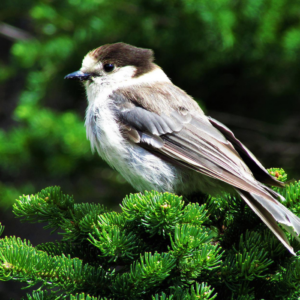Aflockalypse: What It’s Really Trying to Tell Us
 |
| Photo: Steve Kulak |
When 5,000 red-wing black birds dropped from the Arkansas sky earlier this month, the media sat up and took notice.
In the following days, reports of other mass die-offs in the animal kingdom surfaced. From Vietnam to England, birds were falling from the sky, crabs were washing up dead on beaches, and the world was spinning on its head.
But in the weeks since that sorrowful start to 2011, lurking in the shadows of the media hysteria, the question about what it all really meant, remained unanswered.
What can we make of the ‘Aflockalypse’?
What we do know is that animal deaths happen regularly. These mass deaths often go unnoticed by the general public, but not unrecorded by watchful researchers and citizen scientists. An average of 167 mass events are reported to the Geological Survey every year, and their wildlife specialists know of at least 16 cases over the past 20 years of large numbers of blackbirds dying all at once.
Many of these deaths are caused by storms, disease, and human activity.
According to Mike Parr, president of the American Bird Conservancy, billions of birds die every year due to human activities. Cats account for close to half a billion deaths alone. Collisions with buildings bring down between one hundred million and a staggering one billion birds every year. It’s also estimated that 15 million birds succumb annually to pesticide poisoning.
Closer to home, tens of thousands of Common Loons along with some ducks and Cormorants have been killed in the past 10 to 15 years from avian Type E Botulism. The deaths were likely caused by a combination of human-related activities and a particular set of circumstances. Undoubtedly, certain human activities threaten wildlife. As a result, we have an ethical responsibility to ensure that our actions are not endangering other forms of life and if they are, we should change them so that they don’t.
So while the recent animal die-offs reported in the media are not really that uncommon, they can be seen as an extension of a greater problem: extinction.
Experts say that worldwide, 17,000 plants and animals are threatened with extinction. The over-riding cause is human ‘progress’, which often results in significant habitat loss. And increasingly, climate change will drive the disappearance of wildlife. The Intergovernmental Panel on Climate Change (IPCC) reported that 20%-30% of the world’s plant and animal species will be at increased risk of extinction if global temperatures continue to rise.
A major study last year raised alarm bells over dramatic declines in biodiversity on the planet; 20% of the world’s vertebrates are threatened, and an average of 52 species of mammals, birds and amphibians move closer to extinction annually.
Canada’s latest and most comprehensive survey of biodiversity shows that in this country 20% of amphibians are at risk of extinction, 17% percent of freshwater fish are endangered or threatened, 40% of grassland birds have been lost and there has been a 50% decline in the 35 shorebird species found in Canada.
At Nature Canada, we’re working to prevent the extinction of plants and animals by:
- Informing the public about the plight of Canada’s threatened wildlife
- Understanding the nature of human-caused threats to wildlife
- Pushing for effective laws and supporting programs to protect endangered species and their habitats, and keep common species common.
While the intense media focus on the Aflockalypse may have been nothing but a curious media meme, it is certainly true that these days, it’s harder for many species to survive and thrive, and much work is needed to avoid the current extinction trends.



